The pre-1989 centralized cultural institutional system has been dismantled much quicker in Hungary than in Romania, and it cannot be considered to be independent from political processes and the pace of privatization. The groups of opposition that existed before the system change and developed into the new parties – the democratic opposition that principally supported (neo-)liberal principles and later became SZDSZ, Alliance of Free Democrats, the same way as MDF (Hungarian Democratic Forum) which was mainly supported by conservative intellectuals and later won the 1990 parliamentary elections – had a share in privatization that was quicker and more comprehensive than in Romania. Even though there were significant differences between the two parties, for example regarding the question of call to account, the result speaks for itself: in 1989 80% of the GDP was provided by national companies as opposed to the 20% by private ownership, and the ratio changed to 70/30 in favor of private ownership by late 1990.[1] Even though there are no such rates in the cultural field because here the chief patron or owner remained the state in numerous areas, even the Natural Cultural Fund of Hungary (NKA) which is basically independent from the ministry and was founded during the conservative government, and which meant, at least regarding culture financing, a shift towards the liberal model. However, Ákos Tóth might have a point when he calls Hungarian state financing of culture a ‘hybrid’ model that is based on the combination of one between centralized (France) and liberal (Great Britain), political centralization and fiscal decentralization.[2] Whereas in Romania both literally and symbolically breaking up with the old system took significantly longer. During the Ceausescu dictatorship it was impossible to organize opposition, and the PSD (Social Democratic Party) of Iliescu (1990-1996, 2000-2004) was mostly interested in continuity.[3] As Cristina Stoenescu writes, the principal changes in the cultural institutional system happened around 2005.[4] For example, since this year a financing body operates that similarly to the NKA is quasi independent from the ministry (Administratia Fondului Cultural National). Mara Ratiu writes in one of her studies that in the discussed period the Romanian art world was exceptionally tense and fragmented compared to other Eastern and Central-Eastern European scenes.[5] It is hard to argue with this statement, however, according to my perception, in Hungary the disagreements in the art world, the debates after the change of the institutional system, and the artistic and ideological differences were similar. In Hungary cultural differences of society, the so-called “culture war” caused by the division commonly traced back to the rural-urban debate of the 1920-30s gives a peculiar appearance to the tension in the field; in Romania it was the legacy of the Ceausescu dictatorship, and the backwardness of the art institutional system compared to other Eastern-Central European countries. It is clear from this that what they have in common is the changing process of the formerly centralized institutional systems. Tensions caused by this seemingly originated in the nature of the systems and were practically regular because they happened with the same intensity in both post-communist societies; in the 1990s in Hungary around the Műcsarnok (Kunsthalle, Hall of Arts) and in Romania mainly around educational institutions. However, while in Hungary the changes caused heated debates and conflicts in the late 1990s-early 2000s that was followed by a much more peaceful period, in Romania by the end of the 1990s tension has not ceased in the art world, indeed, it culminated in the conflicts started in 2001 around MNAC (The National Museum of Contemporary Art in Bucharest) that lead to the most heated debates until that time.
Breaking up the centralized institutional system and salon debates in Hungary
In the countries of the former Eastern European Socialist Bloc an institutional system operated that kept the fine arts under strong ideological control, the development of which took place around the early 1950s based on Soviet model. In Hungary the Association of Hungarian Fine and Applied Artists (MKISZ) was established in 1949 and it functioned as the administrative body of fine arts, and the aim of which, stated in its founding documents, was “creating the new Socialist Realist art”[6] and the Art Fund of Hungary (Művészeti Alap) which was responsible for financing the art word was founded in 1952. Members of the Fund helped artists to receive pension and other benefits. It was reformed in 1954 and allowed to have its own companies. This is how the Picture Gallery (Képcsarnok Vállalat) was established, that managed the buying and selling of artworks through its network of galleries, but between 1965 and 1981 it was the Fund that organized the so-called ‘two million purchases’.[7] On these yearly organized exhibitions the Fund purchased mostly panel paintings, contributing significantly to the living of numerous artists, but the positions of the people in this system obviously mattered. The reformation of the Fund and the Picture Gallery during the process of privatization in 1992 and their elimination for that very reason hit hard the artists who had been dependent on this institutional system, i.e. significant part of the members of the MKISZ. It is true, however, that the Fund was not terminated entirely because larger part of its real estate properties was transferred to the Public Fund of Hungarian Art (Magyar Alkotóművészeti Közalapítvány), the legal successor of which today is the MANK Nonprofit Ltd., and members of the Fund who reached the retirement age until 1992 still receive pension. In spite of this, significant portion of the art world considered the reformation of the Fund and the elimination of the Picture Gallery a tragedy. The MKISZ which continued to operate independently from the state lost its infrastructure almost completely and thus it got in a difficult situation. Furthermore, the Hall of Art which was the place of its largest exhibitions, the salon exhibitions, started to provide space more and more to the ‘progressive’ or the formerly ‘semi-official’ artists who were not connected to the centralized institutional system.
The Hall of Art where from the mid-1980s such exhibitions were organized that would have been unimaginable in Romania was a very important exhibiting space in the 1990s in Central-Eastern Europe. Under the management of Katalin Néray, Katalin Keserü but most importantly László Beke, numerous international – characteristically Polish, Slovak, or even Romanian[8] – contemporary exhibitions were organized, and beside these artists employing new techniques, mediums, and members of the ‘neo-avant-garde’ generation who had not been offered the opportunity to display their works in large state exhibitions in the 1960-70s were put in the spotlight. From this point on the conflicts that were expressed in the discourses around National Salons were mostly between the Hall of Art, the management of the MKISZ, and artists who did not fit the current art trends and who had less chances on the international scene. The reason why Ludwig Museum did not become a conflict zone is most likely the fact that the management of the MKISZ considered the Hall of Art as their institution because it was established by the first national Hungarian artist organization, the National Society of Hungarian Fine Arts (OMKT), although MKISZ was not its legal successor. The MKISZ strongly criticized the management of the Hall of Art on several occasions because of the too many international exhibitions and its exhibition practice that ‘over-favored’ the ‘neo-avant-garde’ generation, and also proposed the idea of the yearly salon exhibitions. The most heated salon debates that were beyond the scope of the contemporary art field – and were also present in the big national daily papers, television and radio – emerged in 1997 and 1999. For instance, in 1999 Iván Szkok, who later became president of the MKISZ, burned paintings in front of the Hall of Art, and sued the director of the institution for misappropriation. The 1997 debate was resolved by the (liberal) minister of culture of the MSZP-SZDSZ coalition when he convinced László Beke to give in to the MKISZ that time. It is hard to prove but the reason of the minister’s intervention was probably that the debate would have given reason to attack the party in the upcoming campaign.
It can be stated about the art debates of the period after the system change that they were not always independent from the so-called ‘culture war’ of the first Fidesz government on the turn of the 1990s and 2000s. However, it would be a mistake to interpret these debates solely in the context of leftist and rightist parties, and of the political-ideological battles between intellectuals, or simplifying it to a ‘conservatives vs. moderns’ discourse; the assumed ‘over-favoring’ of the ‘neo-avant-garde’ generation was criticized not only by the MKISZ or the neoconservative artists or critics. Péter György insisted on “giving up neo-avant-garde” already in 1992,[9] Edit András criticized in several of her essays the “surviving modernism” in Hungarian art,[10] and János Sturcz found the over-favoring of the older generation over the younger harmful in his essay Üzenet a mestereknek [Message to the Masters] which lead to a lengthy discussion on the pages of the Új művészet journal in 1998.[11] The reason for this was that the decisions of the management of MKISZ did not reflect the will of the entire membership because a couple ‘neo-avant-garde’ artists participated in the salon exhibitions and also because the transformation risked the living of many artists in the decade of ‘wild capitalism’.
In the pro and counter essays regarding the salon there is an interesting mixture of sometimes almost nationalist rhetoric, the nostalgia for the structures of the Socialist period that were ideologically controlled but provided material safety, and the postcolonial or liberal/neoliberal discourse. After the 1999 salon scandal, the MKISZ lost even more positions and it reached a marginalized role within the art field. The 2001 salon exhibition that was finally organized was not coordinated by the association, and it was the last one until the exhibitions organized by the MMA (Hungarian Academy of Arts) after the change of government in 2010.
The debates around the UAP and MNAC in Romania
Romania had a similar system before 1989; however, the process of change was not completely identical to the Hungarian. The Fund (Fondul Plastic) was founded in 1949, the artists’ union (Uniunea Artistilor Plastici) – the bylaw of which contains a paragraph claiming that Socialist Realism is the main artistic ideological position – was established in 1950. An act of 1990 declared the union an NGO independent from the government,[12] as a result of which it lost a lot of revenues, although it did not become as defenseless as the MKISZ. The Romanian artists’ union managed numerous non-profit exhibiting spaces and studios country-wide, and it took over the duties of the Fund which was dissolved in 1993. The MKISZ lost its youth organization during the system change because the Young Artists’ Studio kept on operating as an independent association (FKSE). In Romania, however, the Atelier 35 remained part of the union. Organizations in rural cities slowly discontinued operations, but the one in Bucharest – despite numerous moves and internal debates – still operated under the union.[13] The journal entitled Revista Arta that used to be the only professional paper of fine arts prior the system change in Romania also remained at the union. This was the case in Hungary regarding the journal Művészet, however, the publication was ceased in 1990, and it kept on existing with a different title (Új művészet) and a different editorial board independently from the MKISZ. According to an act of 1999,[14] the so-called artists’ benefit is held by the union, which means that 0.5% of each sold artworks gets into the budget of the union. An additional difference is that members of the union who reach the retirement age receive pension even today. The Romanian artists’ union underwent several changes regarding its management and also its profile, and it has lost numerous positions and resources compared to the previous system, but it still has a significant position in the artistic institutional system.
In Romania there was no exhibiting space with such great heritage like the Hall of Art, and no contemporary art museum existed before 2004, so art debates of the 1990s were less visible, although not less intense. As Mara Rațiu explains, before the MNAC debate the main conflict zones were the places of art education and the few institutions dealing with contemporary art. In Romania during the 1990s debates and competitions for positions around the most important bastion of contemporary art in Bucharest, the Soros Center for Contemporary Art (Centrul Soros pentru Arta Contemporana) was not closely connected to the history of reformation of the union or the institutional system of the former system, however, the debates regarding art education were.
In Hungary art education was only available in Budapest, but in Romania it was in three cities (Bucharest, Cluj, Iași) before the system change, but in the early 1990s a faculty of art was established at the University of Timișoara and a secondary school providing art education was attached to the system. As Mara Rațiu puts it, after 1989, numerous artists and teachers connected to the previous system have lost their jobs, but the young students were not content with the personnel changes, nor were the artists using new mediums who insisted on involving these mediums in art education.[15] Especially because the union lost its most important income, the state support, and got in uncertain financial situation, its members tried to find jobs in public education; members in better positions within the union had better chances. Thus the union dominated public art education in the 1990s, which resulted in numerous debates and other conflicts. The most famous is the 1997 action of the Cutter Group entitled Nivel 0 de regenerare [Level 0 Regeneration], performed at the faculty of sculpture of the University of Bucharest. As it is stated in Judit Angel’s PhD dissertation,[16] graduating students of the university tried to hold education back in the school by sabotaging the works of their second-year fellows, to make room for discussion between students and teachers about the lacks of education. The event stirred up a storm. At first, students participating in the action were expelled, then for the intervention of the cultural minister, they were readmitted to the university. However, not much later a couple of teachers with ‘new ideologies’ were hired. In Hungary similar events happened at the Hungarian University of Fine Arts in 1990,[17] during which a part of the students boycotted classes and after which numerous new artists/teachers were hired, and this event caused the foundation of the Intermedia Program, lead by Miklós Peternák.
The debates around the foundation and operation of MNAC are internationally known. Already in 2004, numerous international papers reported on the debate that divided the entire scene – e.g. The Guardian published a critical piece entitled They have Hijacked art[18] –, and Piotr Piotriwski gave a detailed description of the museum in his book entitled Art and Democracy in Post-Communist Europe.[19] It is important to emphasize that the debate did not occur between those younger and older artists who used new materials or could be connected to critical views and the ‘experimental’ art of the 1970s and more conservative artists. For example, current director of the museum, Călin Dan, who belonged among the supporters of the project, had been the director of the Soros Center for Contemporary Art before.
The MNAC debate started in 2001 and continued even after the opening of the museum, and it still greatly divides the Romanian art world. The most important issues were the placement of the institution, the lack of public debates, and its exhibiting practice. Cosmin Costinas published an article in the Idea of Cluj and wrote that the debate was part of the social discourse related to processing the communist past, erasing and integrating the burdensome reminiscences of the past. He distanced himself from the museum-project, but wrote in his article that the building would be ‘neutralized’ in the long run.[20]
Mihai Oroveanu, who later became director of MNAC, first stated as a fact in the 2001/7 issue of the Arterier Magazin that the first Romanian contemporary art museum would be set in the People’s House of Ceausescu, in the building of the parliament.[21] A compilation was also published here in which the answers of numerous Romanian and international contemporary art professionals could be read for 6 questions about the museum; there was no question regarding the placement of the museum. Supporters of the project later argued that the parliament building was huge, almost impossible to fill, so the placement of the museum in it was justifiable. However, the truth is that many governmental institutions (ministries, the office of the prime minister, etc.) do not operate in this building. Mihai Oroveanu emphasized in the catalog published on the occasion of the opening that the MNAC project would be complete with converting the area in front of the ‘E4’ wing of the parliament into a park and connecting it to the museum.[22] But instead, today a huge cathedral is being constructed on the area opposite to the museum. Oroveanu also writes in the same essay that the institution wishes to offer home to different fields of art (film, music, literature, theater). Considering that the MNAC should perform the duties of the Ludwig Museum of Vienna and the Hall of Art in a space that is smaller than the Ludwig Museum of Budapest, in such a capital where there is no exhibition on art of the second half of the 20th century in any museum, it might seem a fairly naïve idea.
Like in all serious debates, in the discourse around MNAC there were logical argumentations from both sides. One of the most frequently said ones was the “Here and now, or who knows when…?”[23] – it is hard to argue with this opinion, because it is a fact that it was the first serious gesture from the state towards contemporary art. Many thought rightly back then that it was the most that could be forced out of the leaders of a financially struggling country. It is easy to argue afterwards, yet it is unhistorical, but by now it is clear that, if the professionals and those accepting and supporting the project had more self-confidence, the things might have worked out differently. Moreover, the economic indicators of the country strengthened in the 2000s, joining the European Union has changed several things, and not least after the big revaluation of contemporary Romanian art after 2004 – which was independent from the opening of the MNAC – representatives of the scene might have been able to negotiate from an entirely different position about a new contemporary art museum.
In his essay in the catalog published for the opening, Ami Barak calls MNAC a ‘poisoned present’,[24] although founding a contemporary art museum should not be a gesture of donation from the state, even less from the government, and it should not be the interest solely of the scene but the society. International orientation of Romanian artists and their successful adaptation to the international art market was most likely greatly influenced by the Romanian conditions, the lacks of the infrastructure of contemporary art; even so, contemporary art is currently in a position that would allow it to reflect on the reformation or at least the development of the national institutional system.
Translated from Hungarian by Eszter Greskovits.
The article and the research were parts of the East Art Mags program. Júliusz’ stay in Bucharest was made possible with the support of the Balassi Institute. The author would like to thank Caterina Preda, Călin Dan and Cristina Bogdan for their assistance in the research.
[1] Romsics, Ignác: Rendszerváltás Magyarországon. [System Change in Hungary]. Akadémiai Kiadó, Budapest, 2013, 136
[2] Tóth, Ákos: Megváltozott állami szerepvállalás az uniós tagállamok kultúrafinanszírozásában. [The Transformation of the Role of the State in the Cultural Financing of the European Union’s Member States]
PhD Thesis. University of Debrecen, Doctoral School of Economics, 2011, 197
[3] Preda, Caterina: Art and Politics in Postcommunist Romania. Changes and Continuities. The Journal of Arts, Management, Low, and Society, 2012, 116-127, 122
[4] Stoenescu, Cristina: Continuităţi şi contraste în spaţiul artistic postcomunist românesc. In: Alexandra Ionescu (ed.): Studia Politica. Romanian Political Science Review. Vol. XI, No. 4, 2011, 687-700
[5] Ratiu, Mara: Lumea Artei Contemporane în România postcomunistă: modele mentale, Instituții şi organizaţii In: Călin Dan, Iosif Király, Anca Oroveanu, Magda Radu (ed.): Arta în România între Anii 1945-2000. O analiză din perspectiva prezentului. Unarte, București, 2016, 256-272, 256
[6] Horváth, György: A művészek bevonulása. [March-in of Artists] Corvina, Budapest, 2015, 35
[7] Kácsor, Adrienn: „Kétmilliós” vásárlások. Képzőművészet és politika a Kádár-korszakban. [‘Two Million’ Purchases. Fine Art and Politics during the Kádár Era], Médiakutató, 2009, Fall
https://mediakutato.hu/cikk/2009_03_osz/08_kepzomuveszet_politika_kadar (2018.10.30)
[8] Színeváltozások/ Macrotrans-Representation. The Week of Romanian Art, exhibition, organized by Sorin Dimitrescu, László Beke and others, March 30-April 22, 1998
http://mucsarnok.hu/res/mucsarnok_javitott_kiallitasok_2.pdf (2018.10.30)
[9] György, Péter: A későszocializmus után, a kapitalizmus előtt. [After Late Socialism, Before Capitalism], Új Művészet, 1992/9, 76-81
[10] András, Edit: Utolsó Pár, előre fuss! [Last Couple Out!], Új Művészet, 1994/7-8, 4
[11] Sturcz, János: Üzenet a mestereknek. A kortárs magyar művészet megítélésének és önértékelésének problémáiról az átmenet időszakában. [Message to the Masters. About the Problems of the View and Self-Estimation of Contemporary Hungarian Art in the Transitory Period], Új Művészet, 1998/5, 37-40
[12] Draghila, Dan (et al): Uniunea Artiștilor Plastici din România în documente de arhivă. Editura Universității din București, 2016, 75
[13] Stoenescu, Cristina: The Transformation of the Romanian Artists’ Union after 1990. The Case of Atelier 35. In: Caterina Preda (ed.): The State Artist in Romania and Eastern Europe. The Role of the Creative Unions. Editura Universității din București, 2017, 129-153, 129
[14] Draghia, Dan (et al): Uniunea Artiștilor Plastici din România în documente de arhivă. Editura Universității din București, 2016, 92
[15] Ratiu, Mara: Lumea Artei Contemporane în România postcomunistă: modele mentale, Instituții şi organizaţii. In: Călin Dan, Iosif Király, Anca Oroveanu, Magda Radu (eds.): Arta în România între Anii 1945-2000. O analiză din perspectiva prezentului. UNArte, Bucharest, 2016, 256-272, 259
[16] Angel, Judit: 1989: Fordulópont a romániai művészetben és társadalomban. [1989: A Turning Point in Romanian Art and Society] PhD dissertation, Eötvös Loránd University, Faculty of Humanities, Doctoral School of Arts, Budapest, 2008, 133
[17] Little Warsaw, Székely, Katalin: Rebels. Tranzit.hu, Budapest, 2017
[18] Paul, James: They have Hijacked art. The Guardian, 2004. 12. 28.
https://www.theguardian.com/artanddesign/2004/dec/28/art (2018.10.30)
[19] Piotrowski, Piotr: Art and Democracy in Post-Communist Europe. Reaktion Books, London, 2012, 206-212
[20] Costinaș, Cosmin: The Opening of MNAC. IDEA arta+societate. 2004
http://idea.ro/revista/?q=en/node/41&articol=277 (2018.10.30)
[21] Un chat aproape serios asupra unui work in progress at its very beginnings între Mihai Oroveanu, Ruxandra Balaci, Irina Cios și Adela Vaetiși. Arterier, 2001/7, 4-5
[22] Oroveanu, Mihai: Intro. In. MNAC. Muzeul National de Arta Contemporana. 2004, MNAC, Bucharest, 2004, 20
[23] Guta, Adrian: Muzeu, Neintelegeri, Arta Contemporana. Revista 22, 2005.07.05.
https://www.revista22.ro/muzeu-neintelegeri-arta-contemporana-1869.html (2018.10.30)
[24] Barak, Ami: Sex, minciuni și architectură/Sex, Lies and Architecture/Sexe, mensonges et architecture. In: MNAC. Muzeul National de Arta Contemporana. 2004. MNAC, Bucharest, 2004, 46-54, 49
POSTED BY
Júliusz Huth
Júliusz Huth (b. 1982 in Arad, Romania) is a Hungary based art historian. Graduated in 2016 from Eötvös Loránd University with an MA in Art History. Currently Ph.D. student in the Art History prog...


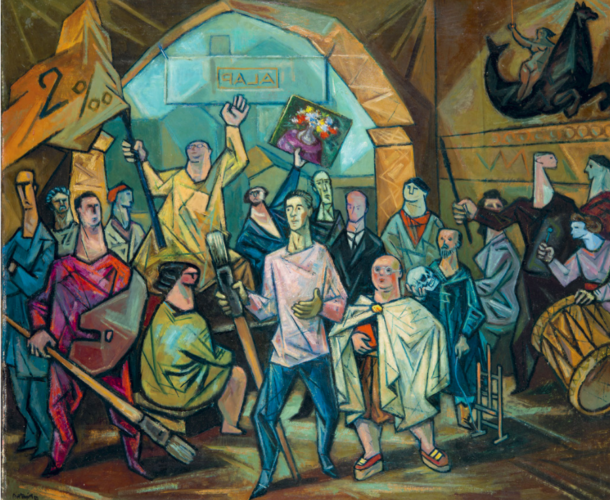
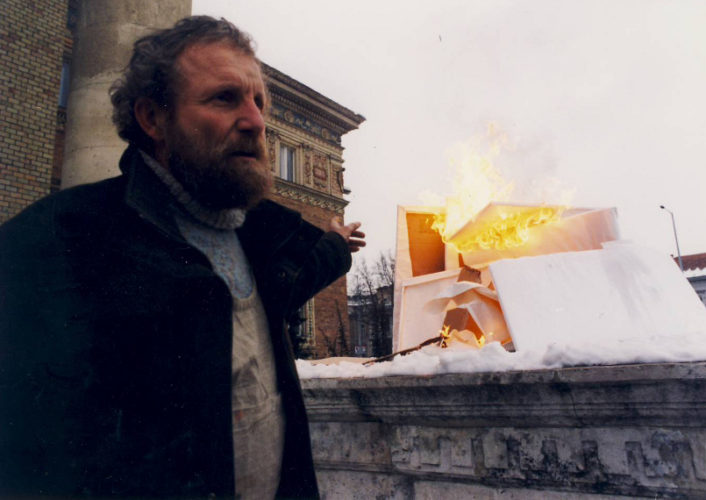
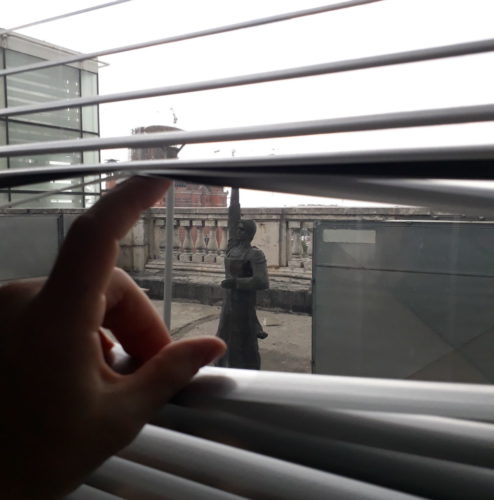
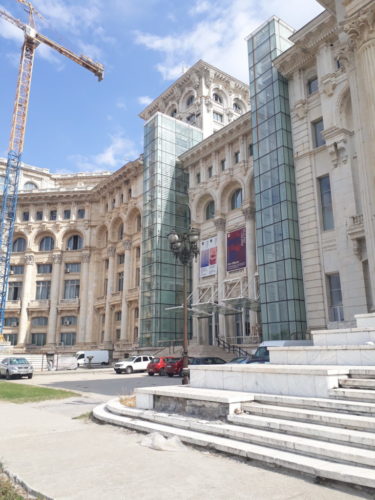
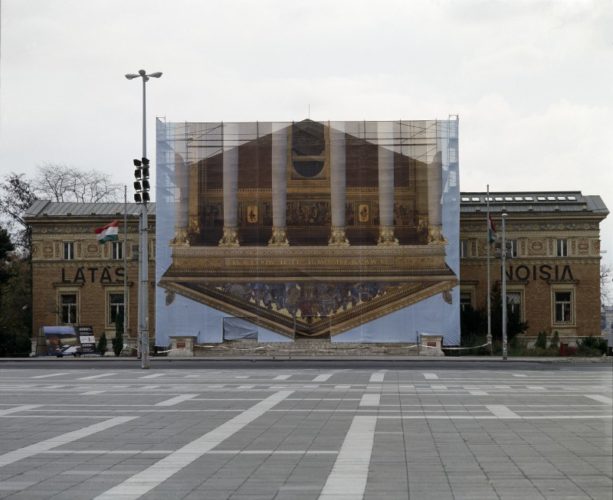

Comments are closed here.